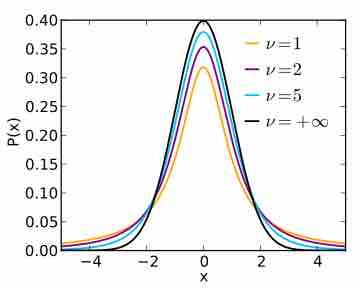Quantitative Data vs. Qualitative Data
Recall the differences between quantitative and qualitative data.
Quantitative (numerical) data is any data that is in numerical form, such as statistics, percentages, et cetera. In layman's terms, a researcher studying quantitative data asks a specific, narrow question and collects a sample of numerical data from participants to answer the question. The researcher analyzes the data with the help of statistics and hopes the numbers will yield an unbiased result that can be generalized to some larger population.
Qualitative (categorical) research, on the other hand, asks broad questions and collects word data from participants. The researcher looks for themes and describes the information in themes and patterns exclusive to that set of participants. Examples of qualitative variables are male/female, nationality, color, et cetera.
Quantitative Data Tests
Paired and unpaired t-tests and z-tests are just some of the statistical tests that can be used to test quantitative data. We will give a brief overview of these tests here.
A t-test is any statistical hypothesis test in which the test statistic follows a t distribution if the null hypothesis is supported. It can be used to determine if two sets of data are significantly different from each other and is most commonly applied when the test statistic would follow a normal distribution if the value of a scaling term in the test statistic were known. When the scaling term is unknown and is replaced by an estimate based on the data, the test statistic (under certain conditions) follows a t distribution .

t Distribution
Plots of the t distribution for several different degrees of freedom.
A z-test is any statistical test for which the distribution of the test statistic under the null hypothesis can be approximated by a normal distribution. Because of the central limit theorem, many test statistics are approximately normally distributed for large samples. For each significance level, the z-test has a single critical value. This fact makes it more convenient than the t-test, which has separate critical values for each sample size. Therefore, many statistical tests can be conveniently performed as approximate z-tests if the sample size is large or the population variance known.
Qualitative Data Tests
One of the most common statistical tests for qualitative data is the chi-square test (both the goodness of fit test and test of independence).
The chi-square test tests a null hypothesis stating that the frequency distribution of certain events observed in a sample is consistent with a particular theoretical distribution. The events considered must be mutually exclusive and have total probability. A common case for this test is where the events each cover an outcome of a categorical variable. A test of goodness of fit establishes whether or not an observed frequency distribution differs from a theoretical distribution, and a test of independence assesses whether paired observations on two variables, expressed in a contingency table, are independent of each other (e.g., polling responses from people of different nationalities to see if one's nationality is related to the response).